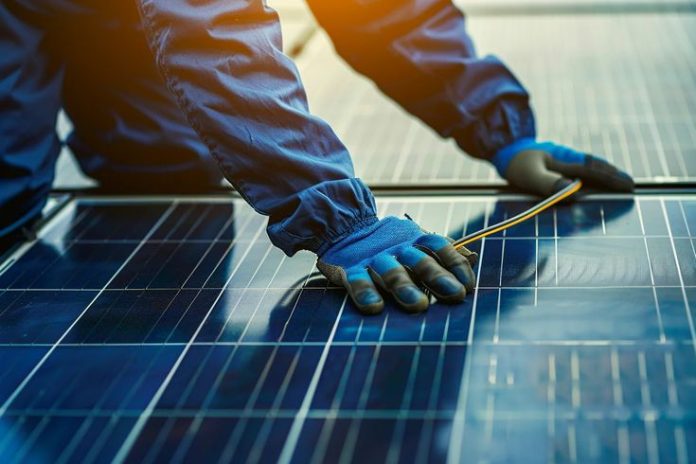South Africa’s energy transition has taken a step forward this week as two of the country’s leading renewable energy players, Red Cap Energy and Anthem, confirmed a partnership to build a 720-megawatt (MW) wind farm in the upper Karoo region of the Western Cape. Expected to come online in 2029, the project has received both grid capacity allocation and regulatory approval from the National Energy Regulator of South Africa (NERSA), positioning it as the largest private wind farm in the nation’s history.
The development comes at a crucial juncture. Several of Eskom’s coal-fired power stations are set to be decommissioned by 2030, either due to age or failure to meet environmental compliance standards. These closures, while necessary for environmental and operational reasons, threaten to deepen the country’s energy supply gap unless renewable sources step in with meaningful capacity. The new wind project, referred to as the Nuweveld Wind Farm, offers precisely that prospect: a bridge between a waning coal era and a cleaner, more diversified energy mix.
According to Mark Tanton, CEO of Red Cap Energy, the project’s timing could not be more strategic. “We’re experiencing temporary relief from load shedding, largely due to Eskom’s plant recovery efforts and a slowdown in industrial demand. But when industrial activity accelerates again, South Africa will urgently need new generation capacity,” he notes. “Wind energy offers a complementary force, it stabilizes our reliance on coal and delivers cost-effective power during peak periods.”
The scale of the Nuweveld project is a signal of the private sector’s growing confidence in renewable investment. Built through a collaboration between Red Cap, a developer with over 1.5 gigawatts (GW) of permitted wind projects, and Anthem, one of South Africa’s largest independent power producers, the partnership represents a broader structural shift: private players are not waiting for policy to catch up. They are building ahead of the curve, aligning commercial opportunity with national need.
The development comprises three 240MW facilities situated between Beaufort West and Loxton, connected via a newly approved 200km transmission line, which will be developed by Red Cap in two phases. This line is more than a conduit for electrons, it’s a statement about agency and foresight. As Tanton explains, “Securing grid access has become one of the most difficult aspects of renewable projects. Our proactive approach, developing our own transmission lines, was key to making this viable.”
This model of private-sector-led transmission development echoes South Africa’s new Infrastructure Transmission Plan (ITP), which invites private companies to build, own, and operate lines on behalf of Eskom. It’s a necessary evolution in a system where grid constraints have often throttled renewable expansion.
At a national scale, this development also signals an important geographical shift. Traditionally, Limpopo has dominated the renewable registration landscape due to its abundant solar potential and existing grid capacity. But new data from NERSA shows the Western Cape has now climbed to second place for privately registered megawatts, a testament to growing investor confidence and regulatory momentum in the province.
What makes this story significant for Africa extends beyond the Karoo. Across the continent, more than 600 million people still live without access to electricity, according to the International Energy Agency (IEA). The African Development Bank (AfDB) estimates that the continent needs $90 billion annually in energy infrastructure investment to meet demand by 2030. South Africa’s approach, mobilizing domestic capital and private partnerships to bridge the generation gap, could offer a template for others, from Kenya to Ghana, to accelerate grid-scale renewables without over-relying on public balance sheets.
The implications also tie directly to Africa’s emerging position in global carbon markets. The European Union’s Carbon Border Adjustment Mechanism (CBAM), which imposes carbon-related tariffs on exports, will increasingly shape trade competitiveness. Industrial buyers who source low-carbon electricity, as this project will enable, will be better positioned to maintain export access and avoid carbon penalties. By embedding renewables into production value chains, Africa isn’t just greening its grids; it’s future-proofing its economies.
Read also: IUCN confirms extinction of Slender-billed Curlew, once common across North Africa
Moreover, this project comes at a time when African nations are intensifying their commitment to Just Energy Transition (JET) frameworks, ensuring that communities near renewable developments gain socio-economic benefits. Wind farms such as Nuweveld are typically accompanied by local procurement, construction jobs, and community trusts that reinvest profits into regional development. If structured inclusively, such projects could anchor a new model of decentralized energy democracy, one where clean power generation uplifts local economies rather than bypassing them.
However, the road ahead is not without complexity. The pace of South Africa’s renewables rollout has historically been slowed by bureaucratic delays, grid congestion, and funding constraints. But the collaboration between Red Cap and Anthem signals growing alignment between technical capability and market readiness. Together, their combined portfolios exceed 13GW in renewable projects, underscoring both the depth of private-sector expertise and the urgency to scale.
Practically, the Nuweveld Wind Farm’s 720MW capacity could power over 500,000 South African homes, offsetting nearly 1.1 million tonnes of CO₂ annually. When operational, it will contribute roughly 2% of South Africa’s total installed renewable capacity, helping to edge the country closer to its Integrated Resource Plan (IRP) targets of achieving 30% clean power by 2030.
This development illustrates a critical inflection point: energy transition is no longer a narrative of aspiration, it’s a matter of engineering, investment, and execution. The continent’s challenge is not whether renewable energy can work, but whether it can scale fast enough to meet industrial demand while ensuring reliability and affordability.






